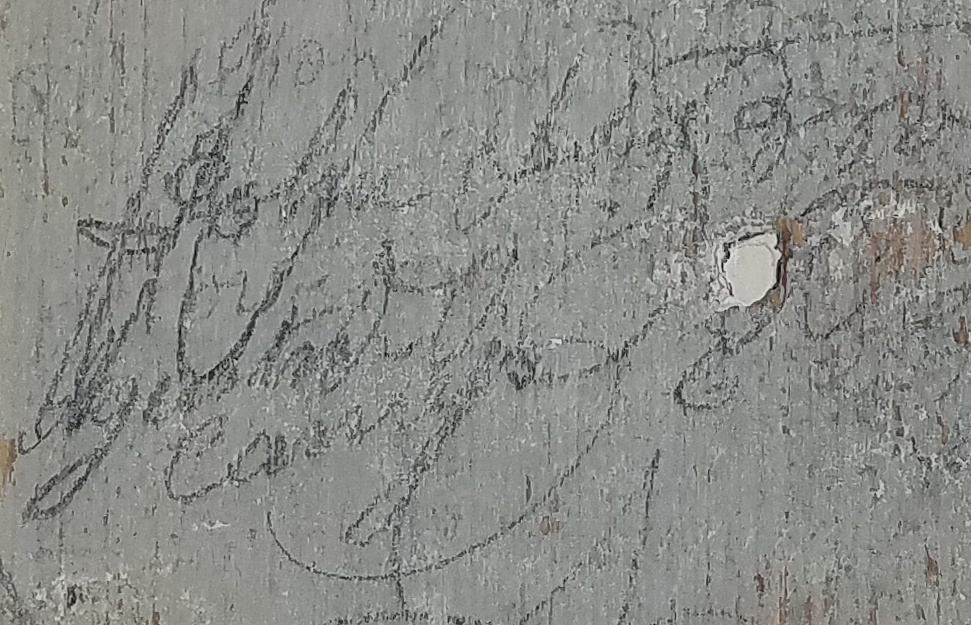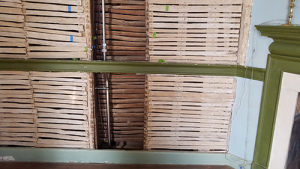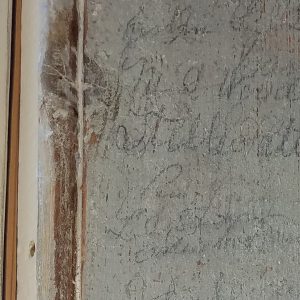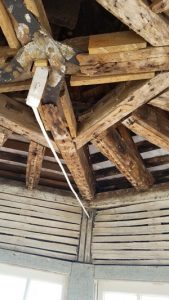A Glimpse at Ongoing Preservation at Mt. Vernon

 The historic preservation of George Washington’s home, Mt. Vernon, is a fascinating and beautiful undertaking. Encore Principal Ward Bucher and his wife Lisa Johnson recently toured the preservation work hosted by Carolina Camargo, Senior Director of Development.
The historic preservation of George Washington’s home, Mt. Vernon, is a fascinating and beautiful undertaking. Encore Principal Ward Bucher and his wife Lisa Johnson recently toured the preservation work hosted by Carolina Camargo, Senior Director of Development.
Despite having the exterior appearance of a stone building due to the sand-paint on rusticated pine blocks, the house is nearly entirely wood from ground level upwards, and the danger of fire is an ongoing concern. The outdated Halon gas system is in the process of being replaced with a water mist sprinkler system that sprays a cloud of unusually tiny droplets.
 Although the high-pressure water distribution pipes are quite narrow, the connections are bulky making it necessary to open some walls and ceilings. Architectural Historian Caroline Spurry explained that the staff is studying the finishes and hidden spaces revealed by the plaster and wood lath removals. The carefully recorded hand-split wood laths will be reinstalled in their initial locations and replastered with a three-coat system with the original mix including hog bristle reinforcement.
Although the high-pressure water distribution pipes are quite narrow, the connections are bulky making it necessary to open some walls and ceilings. Architectural Historian Caroline Spurry explained that the staff is studying the finishes and hidden spaces revealed by the plaster and wood lath removals. The carefully recorded hand-split wood laths will be reinstalled in their initial locations and replastered with a three-coat system with the original mix including hog bristle reinforcement.
 Climbing the mortise and tenon ship’s ladder to stand in the cupola revealed a recent discovery: while stripping paint from the mullions between the windows, hundreds of penciled signatures were found! The staff has photographically recorded the graffiti and will be researching the names.
Climbing the mortise and tenon ship’s ladder to stand in the cupola revealed a recent discovery: while stripping paint from the mullions between the windows, hundreds of penciled signatures were found! The staff has photographically recorded the graffiti and will be researching the names.
 Above the spectacular view of the Potomac River and the complex of buildings, the roof framing has been exposed. Heavy wrought iron straps connecting the wood ceiling joists curve around the base of the protruding central lightning rod. The big surprise is that the base of the hefty iron lightning rod is attached to a skinny horizontal rod that goes back outside through the wood wall. Luckily this protection system has not yet tested by a lightning strike.
Above the spectacular view of the Potomac River and the complex of buildings, the roof framing has been exposed. Heavy wrought iron straps connecting the wood ceiling joists curve around the base of the protruding central lightning rod. The big surprise is that the base of the hefty iron lightning rod is attached to a skinny horizontal rod that goes back outside through the wood wall. Luckily this protection system has not yet tested by a lightning strike.
Caroline noted that Mt. Vernon continues to work on a Historic Building Information Modeling (HBIM) system that is mapping data onto a digital 3-D model. The data is from many sources, including archaeology, paint analysis, historic records, dendrochronology and staff input. More information on the many preservation projects at Mt. Vernon can be found at www.mountvernon.org/preservation/restoration-projects.
